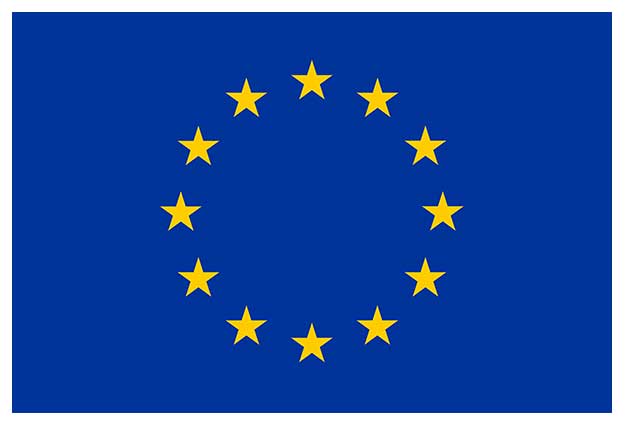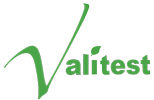Aims and objectives
Aims and objectives of the project
1. To provide more complete and precise descriptions of the performance of diagnostic tests (read more)
Validation data is not available for all tests that are currently widely used in plant pest diagnostic laboratories. This is in particular often the case for high throughput tests such as ELISA. Therefore, in order to guarantee the quality and validity of the results, to comply with the applicable regulations, and use by private laboratories or national authorities involved in official controls, additional testing, validation and harmonisation is clearly required. More harmonisation of the additional testing and validation processes are also required. An improved framework for validation will allow the production of data for faster decision-making and support risk management. This will enhance early eradication of pests, thereby supporting the improvement of Plant Health, thus contributing to the sustainability and competitiveness of the European agri-food sectors.
Furthermore, the improvement of the diagnostic procedures will include the development of tools to maximise the demonstration of the proper use and the respect of the performance of the validated tests. Progressing further with this endeavour in the VALITEST project will enhance harmonisation of controls and surveys in EU countries and beyond.
Furthermore, the improvement of the diagnostic procedures will include the development of tools to maximise the demonstration of the proper use and the respect of the performance of the validated tests. Progressing further with this endeavour in the VALITEST project will enhance harmonisation of controls and surveys in EU countries and beyond.
2. To stimulate, optimize and strengthen the interactions between stakeholders in Plant Health for better diagnostics (read more)
Since 1998, the European and Mediterranean Plant Protection Organization (EPPO), an intergovernmental organization responsible for international cooperation in plant protection, has been establishing a work programme in the area of diagnostics to harmonize procedures across the EPPO region. This involves the preparation of pest-specific diagnostic protocols, as well as horizontal standards providing guidance on validation of tests or on the performance of inter-laboratory comparisons. However, performing validation still mainly relies on initiatives from individual laboratories, although recently several inter-laboratories comparisons have been performed in the framework of Euphresco projects, which are highly valuable for setting standards for analysis at European and international levels (EPPO and IPPC protocols for diagnostics). But despite the active role of EPPO at regional scale, the existence of multiple channels and networks for collecting information about diagnostics tests and needs for development and validation, the mapping of such needs at EU level is also incomplete and not up to date. VALITEST plans to fill in this gap by collecting information from stakeholders (which includes researchers, diagnosticians, policy makers, inspectors, advisory services, industries, seed companies, growers associations, etc.) to build a comprehensive description of their needs.
3. To lay the foundations for structuring the quality and the commercial offers for plant health diagnostics tools (read more)
Among the stakeholders in plant health diagnostics, the diagnostic industry is not currently structured in order to be visible as a whole that can be solicited by other stakeholders.
To better answer the needs of end-users, but also to enhance the competitiveness of the plant health diagnostic industry, the companies need to be identified through an appropriate initiative and not only at an individual level. This project provides the opportunity to establish the foundations for a structure to improve communication concerning offers and demands for plant health diagnostics tests in a sustainable manner.
Although ambitious, the goals of this proposal are reachable, and it focuses on producing validated tests for the detection, identification and quantification of plant pests. The ambition to go beyond the “mere” production of validation data for diagnostics tests for selected pests, and to develop guidance and documents for an improved approach to validation process, using model pests from different disciplines (bacteria, phytoplasmas, insects, fungi, viruses, nematodes, plants), would serve forthcoming needs of different stakeholders at national and EU levels, public or private bodies. This would provide a basis for NRL or EURL activities in Plant Health, improved detection standards for all practitioners, data serving the need for accreditation and certification of laboratories and for mutual recognition. Furthermore, setting up an appropriate structure for the EU plant health diagnostic industry will promote new possibilities for dialogue between the different stakeholders at EU level and beyond.
To better answer the needs of end-users, but also to enhance the competitiveness of the plant health diagnostic industry, the companies need to be identified through an appropriate initiative and not only at an individual level. This project provides the opportunity to establish the foundations for a structure to improve communication concerning offers and demands for plant health diagnostics tests in a sustainable manner.
Although ambitious, the goals of this proposal are reachable, and it focuses on producing validated tests for the detection, identification and quantification of plant pests. The ambition to go beyond the “mere” production of validation data for diagnostics tests for selected pests, and to develop guidance and documents for an improved approach to validation process, using model pests from different disciplines (bacteria, phytoplasmas, insects, fungi, viruses, nematodes, plants), would serve forthcoming needs of different stakeholders at national and EU levels, public or private bodies. This would provide a basis for NRL or EURL activities in Plant Health, improved detection standards for all practitioners, data serving the need for accreditation and certification of laboratories and for mutual recognition. Furthermore, setting up an appropriate structure for the EU plant health diagnostic industry will promote new possibilities for dialogue between the different stakeholders at EU level and beyond.

This project has received funding from the European Union’s Horizon 2020 research and innovation programme under grant agreement n°773139.
The content of this website represents the views of the author only and is his/her sole responsibility. It cannot be considered to reflect the views of the European Commission and/or the Research Executive Agency or any other body of the European Union. The European Commission and the Agency do not accept any responsibility for use that may be made of the information it contains.
The content of this website represents the views of the author only and is his/her sole responsibility. It cannot be considered to reflect the views of the European Commission and/or the Research Executive Agency or any other body of the European Union. The European Commission and the Agency do not accept any responsibility for use that may be made of the information it contains.
© Valitest 2024 | All Rights Reserved
